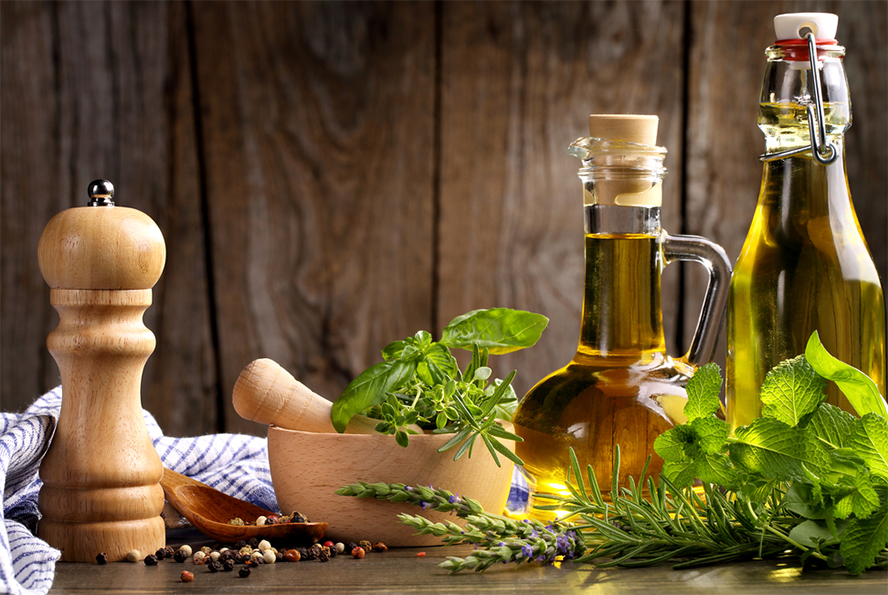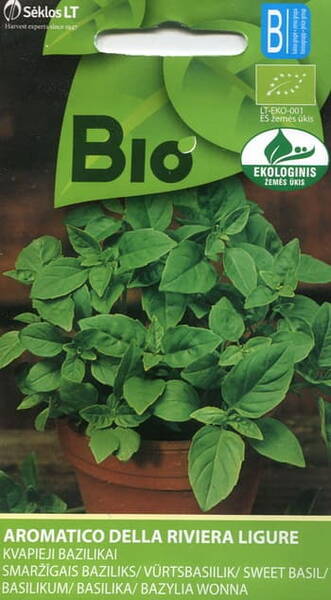Highly aromatic grade. The plant is erect, semi-spreading, well leafy.
Variety value: valuable nutritional and medicinal properties.
Leaves and tender young shoots are eaten as a seasoning for salads, meat and fish dishes.
Unsurpassed medicinal balms are prepared from the seeds, infused with vodka (50-100 g / l) for 3-4 weeks in a dark cool place.
Infusions and decoctions of basil leaves and flowers normalize digestion and metabolism, pressure and heartbeat, strengthen immunity, strengthen nerves, relieve fatigue, anxiety, depression and headache.
1,0 g = 650 seeds.

* Basil, thanks to its wonderful aroma, is grown both in the garden and indoors, but it is in open, sunlit areas that it gets its unique and persistent aroma, thanks to which it has become one of the most popular spices.
Growing basil from seeds by direct sowing in the ground is impossible, so if you want to see fragrant greenery on your summer cottage, either buy or grow seedlings.
In order to get strong seedlings, basil seeds must be sown in boxes in late March - early April (if March is cold, wait until April). Cover them with a thin layer of soil and wait with transplanting into separate pots until four leaves appear on the plants.
If you decide to buy basil seedlings, choose strong plants with numerous leaves, an average height of about 8 cm. Never buy seedlings with thin and elongated stems, with faded or dry leaves or in containers with dry soil - basil loves moisture and it is vital to ensure that the soil does not dry out.
This herbaceous plant, beloved by cooks, is very demanding in terms of sunlight. The sun should illuminate the area where you plan to plant basil for at least 6 hours a day, while the soil should be well-drained and moist.
You will have to water the plants often and abundantly, especially during the active growth period. As soon as the temperature at night stops dropping below 15 ° C, the seedlings can be planted in the ground.
Having chosen a suitable site, dig holes in it (as deep as the length of your plant roots together with the soil plus a layer of gravel and soil of about 5 cm), pour gravel or expanded clay on the bottom and level it. Mix the soil taken from the holes in equal parts with compost and sprinkle it on the gravel. Having taken the seedlings out of the pots, plant them in the ground at a distance of about 30 cm from each other. When 6 leaves appear on the plant, cut the stem above the second pair of leaves - this way you will get lush plants with a large number of shoots. Every two weeks, it is necessary to add liquid manure to the basil bed. If the plants are already mature, then fertilizing should be done after each mowing (during the period of mass flowering, the harvest is collected with reapers in dry weather, cutting the plants along the leaf line). After such mowing, basil grows back very quickly. Weeds and wilted basil leaves must be carefully removed.
Since basil needs to be constantly watered, you need to think about an irrigation system: water should not get on the basil leaves, since contact with it can cause them to become stained.
The harvested crop, if you have not used it, should not be dried, but frozen: only this method of storage preserves the unique aroma of basil.












